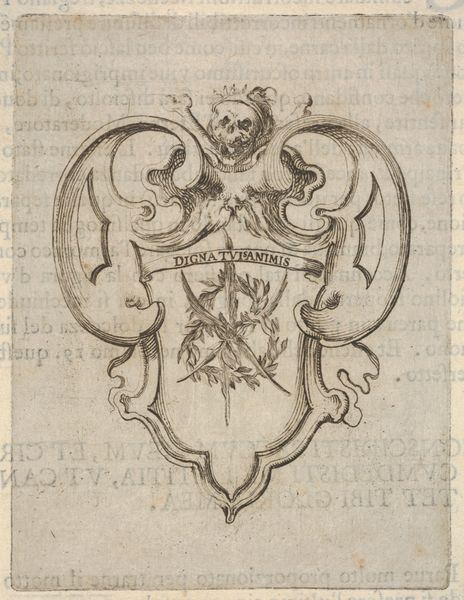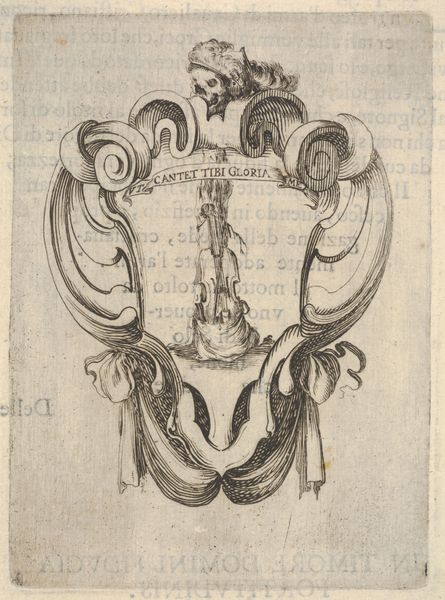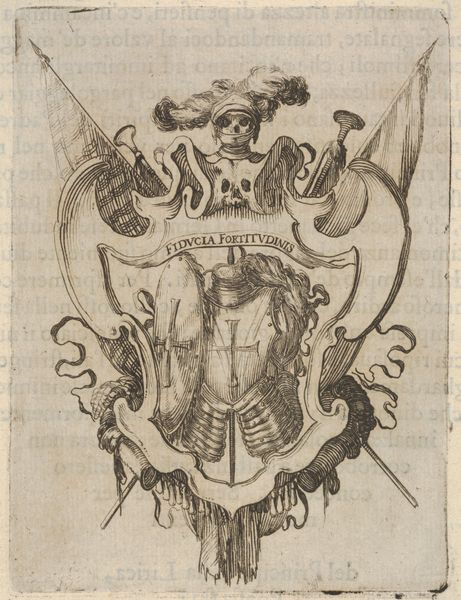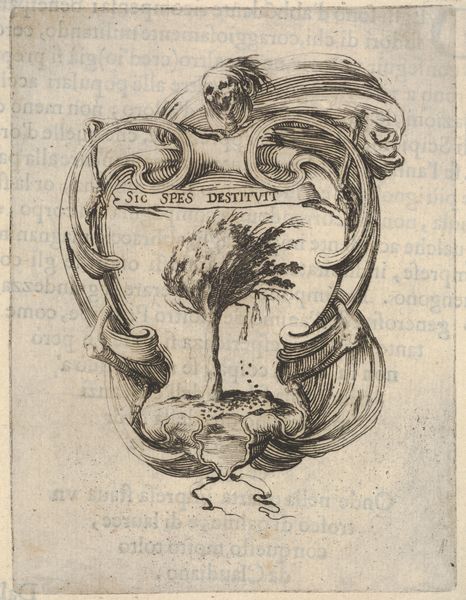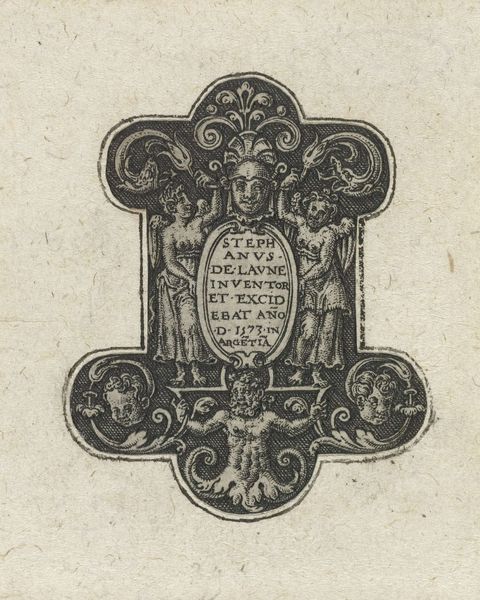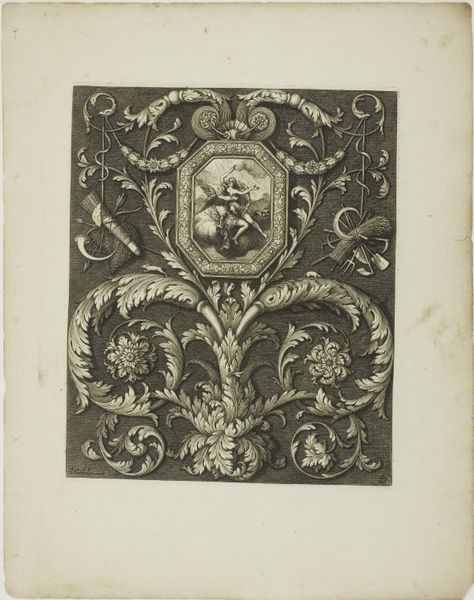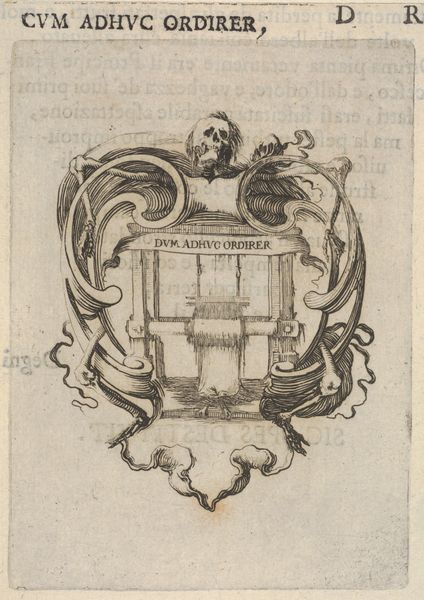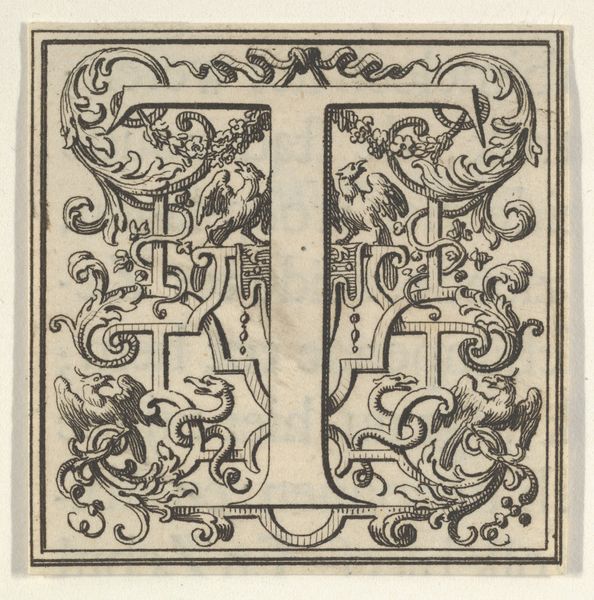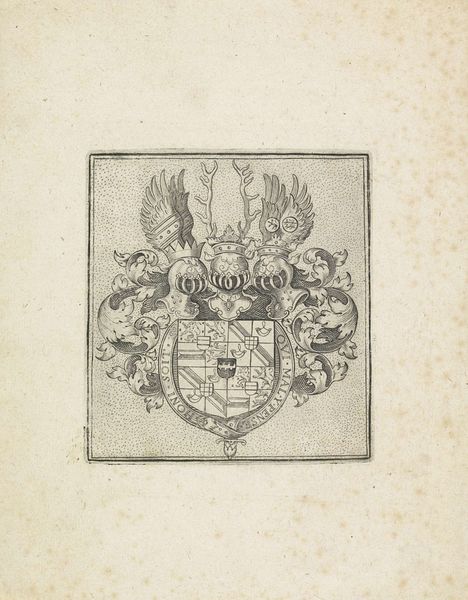
A cartouche with a censer, a skull and crossbones and a grotesque face at top, from 'Eight Emblems for the Funeral of Francesco de Medici' (Huit emblèmes pour les funérailles du prince François de Médicis) 1640 - 1660
0:00
0:00
drawing, print, engraving
#
drawing
#
allegory
#
baroque
# print
#
momento-mori
#
history-painting
#
engraving
Dimensions: sheet: 8 1/8 x 5 1/2 in. (20.7 x 13.9 cm) mount: 9 11/16 x 7 3/16 in. (24.6 x 18.2 cm)
Copyright: Public Domain
This print, now in the Metropolitan Museum, was created by Stefano della Bella as part of a series of emblems for the funeral of Francesco de Medici. It’s made using etching, a printmaking technique that gives the image its distinctive character. The process begins with a metal plate, usually copper, coated with a waxy, acid-resistant substance. The artist draws through this coating, exposing the metal. When the plate is immersed in acid, the exposed lines are “bitten” or etched into the surface. Ink is then applied to the plate, filling the etched lines. The surface is wiped clean, and the image is transferred to paper under high pressure in a printing press. Look closely and you can see the fine, precise lines created by this process, allowing for great detail in the grotesque face, the skull and crossbones, and the smoke rising from the censer. Etching allowed artists to create multiple copies of their work, and the print medium was often used to disseminate information and ideas quickly and widely. In this case, the print memorializes a member of the ruling class – a potent illustration of the power of the printed image.
Comments
No comments
Be the first to comment and join the conversation on the ultimate creative platform.
